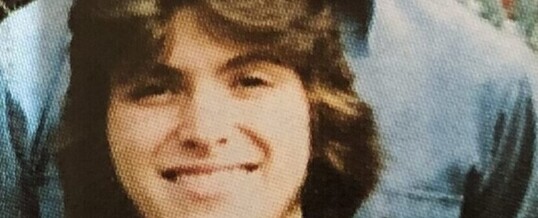
Outliving your hairstyle seems to happen to a lot of folks. Ducktail cuts, shellacked pompadours, bouffant hairdos that could hide an aircraft carrier, and especially mullets, should be shelved and forbidden. Punishment for wearing your hair in any of these forms should be home confinement for 90 days with nothing to watch but reruns of Dr. Phil.
The 60s and 70s in the South served as fashion laboratories. In Ashdown, Arkansas, where I was raised, one of the most common sights was bell-bottoms. They gave every kid a sense of independence. They made us look completely different from the grown ups.
Nothing said “I’m cool” quite like denim flaring out over a pair of scuffed platform shoes. They moved all over when we walked and were an overt rebellion against the straight-laced styles of the 1950s. Everyone from rock stars to high school kids wore them.
But bell-bottoms weren’t without risk. I learned this the hard way on my purple Murray bicycle. My right pant leg seemed magnetically attracted to the greasy bicycle chain. More than once, I ended up coasting to a halt; pant leg firmly lodged, with my mom giving me a verbal work-over because of the chewed-up denim. It was another opportunity for her to remind me about the money tree that we didn’t have in our back yard.
Other cool fashions included leather jackets and tie-dye shirts that also made us look as from here to the moon, different from our parents. Some girls wore miniskirts, paired with knee-high boots or colorful tights. Other notable mentions included fringe jackets, suede vests, and paisley shirts.
Not every look from the ’60s and ’70s deserves resurrection. Polyester leisure suits, for instance, looked like they were spun from petroleum byproducts. My guess is that they looked like that because they were.
One of my relatives was buried in a leisure suit. I still worry that he may have violated an eternal dress code.
And extra-wide ties (so wide they could double as dinner napkins) never should have escaped the clothing factory.
There was a skirt called a broom dress. It was perfectly described. I have no idea why any woman would want to wear one of those, but many did.
(Insert your own riding-a-broom for transportation joke here)
Back to the hairstyles. I am of the opinion that the bouffant should have been classified as an architectural design rather than the name of a hairstyle. Teased, stacked, sprayed, and sprayed some more, it looked less like fashion and more like the Tower of Babel.
Mullets, which really surged in the late ’70s into the ’80s, deserve a permanent ban. “Business in the front, party in the back” was never a legitimate philosophy; it was a warning label for parents who had a daughter. If a girl brought home a fella with a mullet, cars on blocks in the front yard and a beer can collection in the living room were likely part of her future.
Today, bell bottoms are back on shelves. Seen on college campuses and coffee shop corners, they’re sometimes cropped short to avoid a bicycle-chain disaster. Tie-dye has returned, too, for the group called Gen Z. It’s not just because their trying to be hippies, but some of them like it as a DIY art form.
The fringe and suede jackets you used to see at concerts have found their way back onto music festival grounds, proving that if you wait long enough, anything old is new again.
Sneakers used to be for walking, but now some of the sneakers from the ’70s (Adidas, Puma, and Nike) are considered status symbols by many.
What hasn’t returned at any detectable level are polyester leisure suits, extra-wide ties, and mullets on grown men. You’ll see a few young guys with a mullet, but there’s still time for them to redirect their path before cars on blocks and beer can collections become common for them.
What seems to be the case is when it comes to hair and fashion, for the most part, the good stuff usually comes back. Bell bottoms, denim jackets, suede vests, tie-dye, and miniskirts. All were a significant part of American and Southern culture, and can still look good. The bad ideas, such polyester leisure suits, giant ties, or hair that could also serve as a bird sanctuary, tend to stay gone.
In the ’70s, bell bottoms were rebellion. Today, they’re nostalgic. Tie-dye used to be a handmade protest against conformity; now it’s a craft project to show your friends on social media.
One thing that will likely never change is the desire for young people to look and feel cooler than their parents.
I don’t know about you, but my hairstyle hasn’t changed in decades. I’m about to turn on Dr. Phil.
© 2025 John Moore
John’s, Puns for Groan People (a book of dad jokes); and two volumes about growing up in the South called, “Write of Passage,” are available at TheCountryWriter.com. John would like to hear from you at John@TheCountryWriter.com.
AUG
2025
